Tree Pose or Vrksasana in Sanskrit ('Vrksa' means 'Tree' and 'asana' means 'pose') is a yoga posture that strengthens the legs, improves balance, and cultivates mindfulness. The very name suggests the body in the final pose should look like a tree. A tree stands tall, strong, and straight. Thus, while practicing Vrksasana focus on keeping your standing leg strong and stable, rooting down through your foot and engaging your thigh muscles. You can also experiment with different arm positions, such as reaching your arms out to the sides or bringing them down to your sides for more support. Remember to breathe deeply and stay present in the pose, allowing yourself to feel grounded and rooted like a tree.
Yoga For Men – Benefits, Best Types For Practicing and Poses

Yoga for men is becoming more and more popular for their health. For both men and women, yoga helps to reduce anxiety, increase flexibility and core strength. It is not surprising that yoga classes have seen an increase in male participation by 150% in the last four years! What was holding them back?
For non-yogis, there appears to be a “no pain, no gain” mentality. If it isn’t a hardcore workout, then it isn’t really training. But yoga techniques for men can be customized and adapted to increase core work if wanted. The best program for men to make for a workout might be power yoga where a push-up here and there is integrated into a grueling sequence.
“Online yoga for men” are now keywords that can list a huge source of content with 10 min yoga for men videos to do at home. All a guy has to do is pick their favorite video, get themselves a mat and maybe pick their outfit – what to wear during yoga seems to be a taboo subject in itself.
Benefits Of Yoga For Men
- A balance of the body and the mind. Studies have shown that it increases your overall fitness and reduces stress.
- Good for diabetes. Another study in India compared 30 men with type 2 diabetes and 30 men without seeing if yoga helps. And it did! After the following three months of practice, diabetic yogis reduced blood glucose levels significantly.
- Improves sexual life. There are also benefits of yoga for men sexually. Yoga poses that tone the pelvic muscles and puts you in a better mood can help stimulate excitement and energy to perform.
Best Types of Yoga For Men
- Hot Yoga. Hot yoga for men has varying benefits. For the athletic types, hot yoga can help you fix recurring injuries, reduce your coughs and colds and reduce your weight. A few postures included in Bikram Yoga (hot yoga) have been found to compress and activate the digestive system flushing your organs with fresh oxygenated blood. It is also a cardiovascular workout that is lighter on the joints which normally suffer in high-impact and intense tasks during a workout like HIIT. Hot yoga practice also compresses the throat which is needed for the thyroid. The activation of the thyroid increases metabolism and nutrient absorption. Yogis believe that certain poses massage the colon and help remove wind. This, in turn, levels the hydrochloric acid in the gut and may fix issues such as constipation, wind, and acidity on the stomach. Basically, men’s digestive systems will get a reboot!
- Power Yoga. “Power yoga” is basically a mix of strength training and stretching. Class titles like “power yoga” or “yoga for runners” or “for athletes” will ensure that yogis get a challenging and intense workout. This is perfect for men who are looking to get more than breathwork, flexibility, balance, and stress relief from their yoga practice. Yoga for strength training for men can be integrated into any yoga workout to increase the difficulty, but remember that yoga is beneficial in other ways outside of muscle building. Hardcore athletes suffer from tight muscles such as the shoulder, hips, and groin area. Yoga is there to release the tension in those muscles. And don’t forget, all those planks you do in any workout, stretching to rest the muscles after a workout, and breathing exercises you do when you feel stressed can are all part of a yoga practice.
- Face Yoga. Yes, face yoga is a thing and men can be part of the trend too. There have been studies that show face yoga working for anti-aging. There is evidence that shows that face yoga can work for anti-aging. A study conducted by Northwestern Medicine showed that a 30-minute daily facial exercise maintained for over 20 weeks could make middle-aged women look up to three years younger. Men can practice exercises that contract and release facial muscles which tone them up, but you need to commit. For best results, men need to do 30 mins of face yoga a day for up to six days a week. Looking for some exercises? Check out this list here.
- Kundalini Yoga. Kundalini yoga is apparently very good for men, especially when starting out because you are not only challenged physically but also emotionally – which for men can be a very hard thing to do. Yoga is a safe space where men do not need to feel the competition and instead, get support. Having men connect with their consciousness and emotions is a great way to get introduced to yoga before doing any poses. Kundalini yoga focuses on breathwork, chants, and meditation. In Kundalini Yoga, you will discover the word “kriya”. A kriya is a set of postures, breath, and sound that focus in the direction of a specific goal. There are kriyas that focus on the liver, stabilize the glandular system, increase radiancy and glow, strengthen the flexibility of the spine, and many more.
- Tantric yoga for men. Compared to India, most westerners are not as aware of the control they can have over sexual sensations and the sexual energy that creates them. Sexual energy is one of the most important energies seeing as it has the ability to create life and it should not be forgotten or shamed. Tantric yoga is similar to Kundalini in that it focuses on meditation rather than asanas. During practice, there is a lot of focus on certain body parts such as the navel, spine, and pressure points around the meridians.
Kegel yoga for men
Kegel exercises for men can strengthen the pelvic floor muscles, which support the bladder and bowel and affect sexual function. Many men turn to Kegel exercises after going through prostate cancer treatments to help strengthen their pelvic floor muscles and get them back to health. These muscles help control your urine flow.
The pelvic area has muscles, ligaments, and nerves that always seem to suffer from tightness. Many people have to learn how to release the area before they can do any strengthening exercises. Another reason for having problems around the pelvis is the difference between the left and right sides of bodies. For example, one can twist their pelvic from sitting in a bad position for too long, for too many years – like crossing one leg over another. Keegel yoga is one of the best ways to improve pelvic flexibility and strength.
Another typical problem is the imbalance between the left and right sides of the pelvic floor, which could be caused by always crossing the same leg, or standing on the same leg and throwing your other leg out to the side.
Yoga is one of the best ways to improve pelvic floor health. Here are some of the best poses for the area:
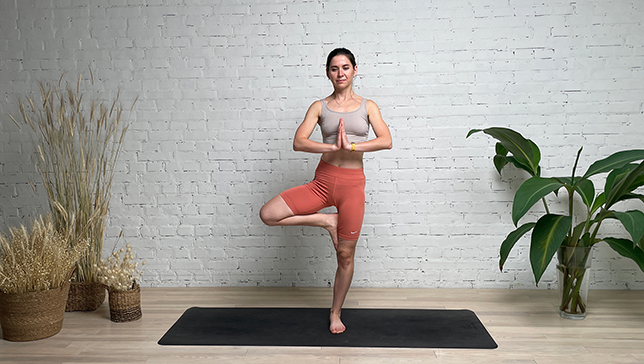
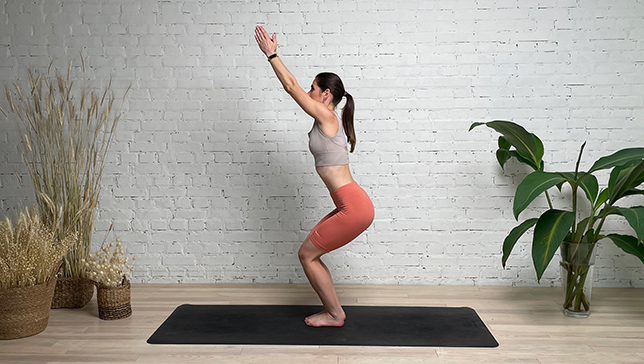
Chair Pose, also known as Utkatasana in Sanskrit, is a standing yoga posture that challenges the strength and stability of the lower body.
Though Utkatasana is also called Chair Pose, one should not think that the meaning of 'utkata' in Sanskrit means 'chair'. This pose is mainly referred to as the Fierce Pose where 'Utkata' means 'violent', 'fierce', or 'severe'. This pose is also called the Chair Pose just because the posture resembles one sitting on an invisible chair.
This pose is one of the first poses in the Sun Salutation B series. It needs ample strength with the quadricep muscles to help your hips get the right support and give the knees comfort to hold the pose for long. Working on the alignment of the hips along with the knees and the pelvic region is very essential to get comfortable in this pose.
Chair Pose is considered a base pose as chair pose variations can be derived from this pose. Chair Pose helps boost energy in the body and hence can be included in different yoga sequences.
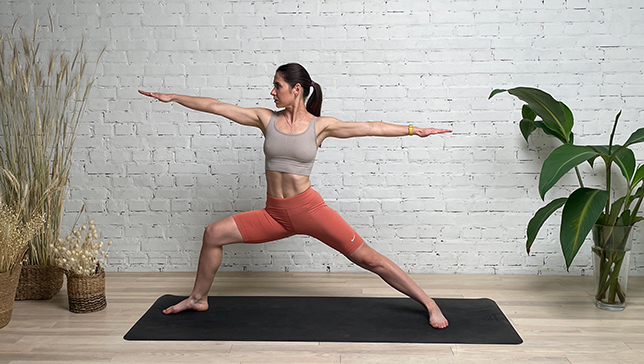
Warrior Pose II or Virabhadrasana II in Sanskrit, is a standing yoga pose that strengthens and stretches the legs, hips, and torso. As per Hindu Mythology, Virabhadra was the name of a Warrior created by Lord Shiva. Hence this pose comes from the creation of the fiercest warrior by Lord Shiva and so the name goes Virabhadrasana or Warrior Pose.
Virabhadrasana is considered a difficult pose as the body alignment needs to be accurate but is generally categorized as an intermediate or beginner-level pose. It is said that the power of this pose can be felt only if one is extremely flexible and stable with their body balance. Virabhadrasana II is one of the many variations of Virabhadrasana Pose.
Warrior II Yoga Pose is often incorporated into yoga sequences for its energizing and grounding effects, and can also be practiced on its own as a way to cultivate focus and mindfulness.
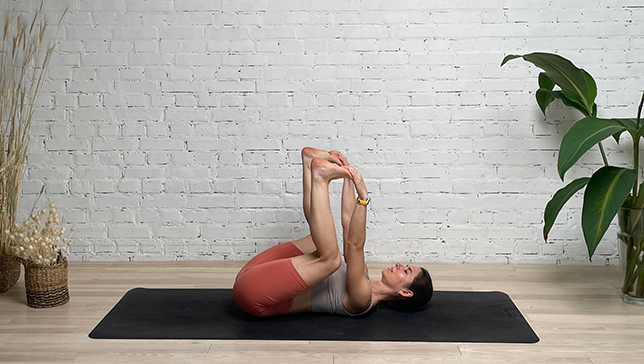
Happy Baby Pose or Ananda Balasana in Sanskrit (‘Ananda’ means ‘Happy’ and ‘Bala’ means a ‘Baby’) is an excellent grounding pose. Interestingly, it is also called the Dead Bug Pose, because of the position that the body takes up while performing this pose.
This yoga pose is considered one of the restorative poses which can be done for better sleep and full body relaxation. Apart from that the pose stretches the inner groins and the back spine, thus Ananda Balasana works as a soft hip opener.
Happy Baby Pose is considered a base pose as happy baby pose variations can be derived from this pose.
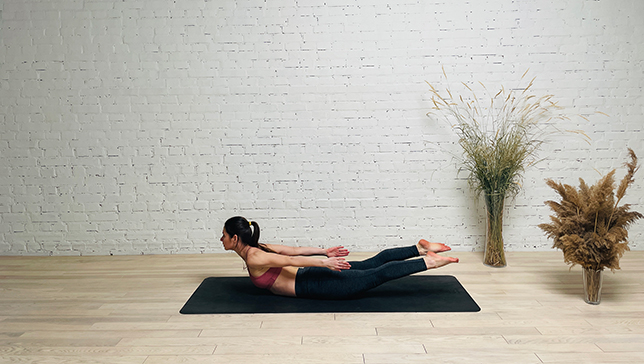
This pose is categorized under the lying down on the belly poses and as Backbend poses. As the name says, Shalabhasana, which in Sanskrit means "grasshopper". So in this pose, the body will look like the insect grasshopper. Here this pose brings as much tightness to the back and buttocks and stimulates the parasympathetic nerves in the lower spinal region. Locust Pose is considered a base pose as locust pose variations can be derived from this pose. Locust Pose helps boost energy in the body and hence can be included in flow yoga sequences.
Best Yoga Poses For Men
So what are the best yoga poses for men to make? For anyone starting as a beginner, you’d want to try out simple yoga poses.
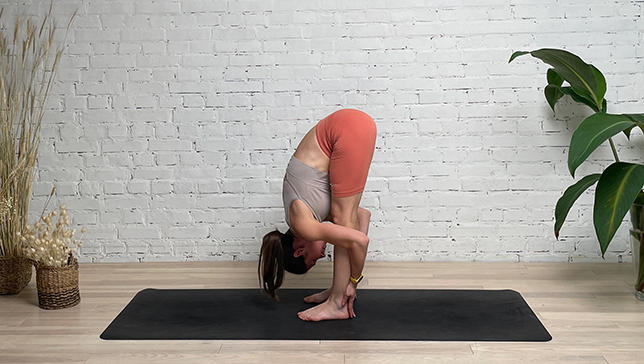
In Standing Forward Bend Pose or Uttanasana in Sanskrit (‘Ut’, means 'intensity' and the ‘Tan’, means 'stretch, extend or lengthen out') the spine is given a deliberate and intense stretch. This yoga pose consists of standing with feet together, bending the upper body at the hips and letting the head hang downwards, and taking control of the body by placing the palms on the floor beside the feet.
This intense forward stretch of the upper body including the spine brings an indirect opening of the hamstring muscles. Standing Forward Bend Pose is considered a base pose as standing forward bend pose variations can be derived from this pose. Standing Forward Bend Pose helps boost energy in the body and hence can be included in flow yoga sequences.
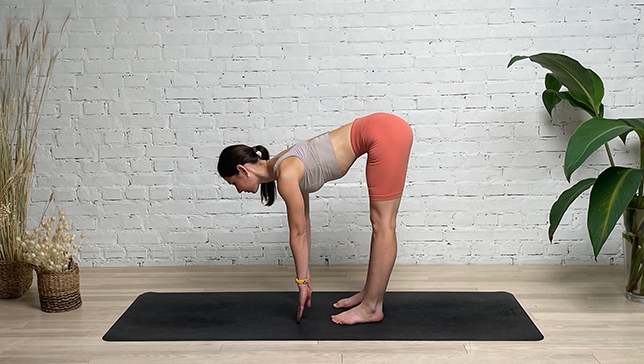
Standing Half Forward Bend Pose, Upward Forward Fold Pose, or Ardha Uttanasana in Sanskrit (‘Ardha’ means ‘half’, ‘Uttana’ means ‘intense stretch’, and ‘asana’ means ‘posture’) is a beginner to intermediate yoga pose. In this yoga pose, the upper body is bent forward to the extent that it remains almost parallel to the floor. This is the half position between bending completely down and standing tall. Therefore, this pose makes it easier for the practitioner to achieve the deep stretch that enhances the range of body movements.
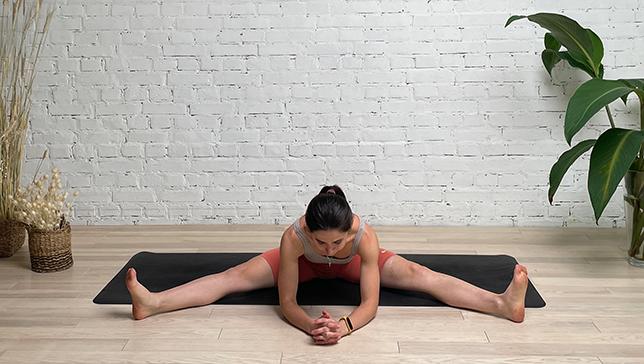
Wide-Angle Seated Forward Bend Pose or Upavistha Konasana in Sanskrit is a seated forward bend that requires flexibility. The term comes from the Sanskrit "upavistha", meaning “seated” or “sitting,” "kona", meaning “angle,” and "asana", meaning pose or “posture”.
From a seated position, the legs are spread wide and the upper body folds forward. In addition to a range of physical benefits, this pose calms the mind and the nervous system.
The common English name for Upavistha Konasana is Wide-Angle Seated Forward Bend, but sometimes it is also referred to as simply Seated Angle Pose.
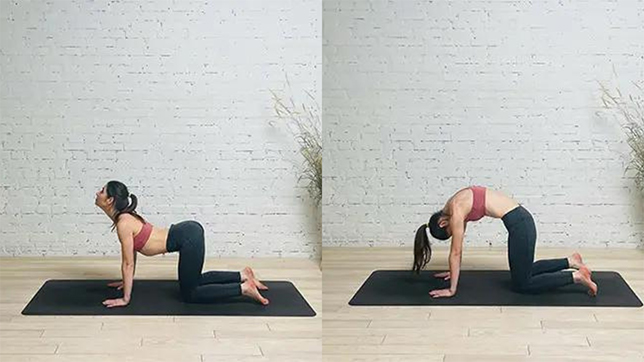
Cat-Cow Pose or Marjaryasana-Bitilasana in Sanskrit ( ‘marjari’ meaning ‘cat’, ‘bitila’ meaning ‘cow’, and 'asana' means 'pose') is a combination of two poses practiced together to gently warm up the spine and the abdomen for more challenging postures or is sometimes also practiced as a simple restorative pose. Coming on all fours, gently moving the back in a rhythmic way, and taking the position like that of a cat or a cow, releases the tensions around the spine and shoulders and tightens the abdomen to make a stronger core. Cat Cow Pose is considered a base pose as Cat-Cow Pose variations can be derived from this pose. Cat-Cow Pose helps boost energy in the body and hence can be included in different yoga sequences. Cat-Cow Pose is considered a warm-up yoga pose to prepare the body for more intense yoga poses or flows.
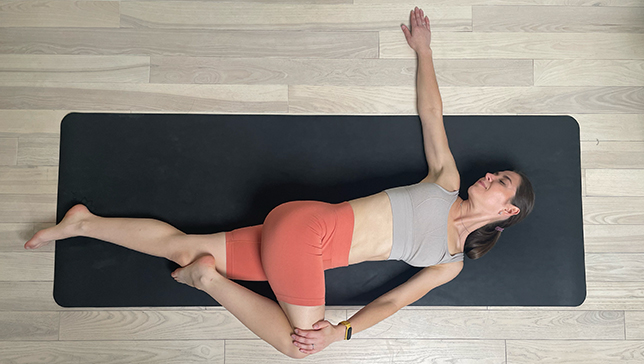
Supine Spinal Twist Yoga Pose I or Supta Matsyendrasana in Sanskrit (‘supta’ = ‘recline’, ‘matsya’ = ‘fish’, and ‘endra’ = ‘refers to Lord Indra the ruler’). The name Matsyendra, here refers to the lord of the fishes, and this pose depicts the pose Ardha Matsyendrasana in the supine version.
This pose is a great twist to the spine and the abdomen and hence is also referred to as the abdominal twist pose.
Supine Spinal Twist Yoga Pose I helps to stretch and release tension in the spine, hips, and lower back. It can be used both as a stand-alone pose and as compensation after backbends and core-strengthening yoga poses.
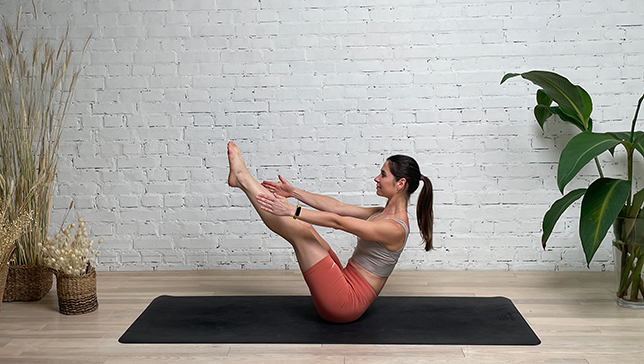
Complete Boat Pose or Paripurna Navasana in Sanskrit ('Paripurna’ meaning ‘entire or full’, ‘Nava’ meaning ‘boat’, and 'asana' means 'pose' or 'posture') is a yoga posture that strengthens the core muscles, including the abs, back, and hip flexors. The Full Boat Pose is a popular pose used to engage the core muscles by strengthening the abdominals and muscles of the pelvis and lower back. While the Full Boat Pose is a difficult yoga pose to perform for many, the benefits of the pose are long-lasting. There are several modifications and variations that can help you work up to the full pose over time.
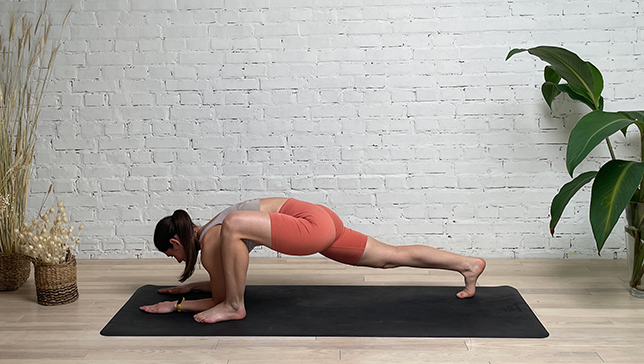
Lizard Pose or Utthan Pristhasana in Sanskrit (‘uttan’ = ‘stretch deep out’, and ‘pristha’ = ‘back of the body’, and ‘asana’ = ‘posture’) is similar to Lunge Pose (Utthita Ashwa Sanchalanasana) but practiced resting on the forearms. Lizards have a great flexible upper body and hence the back of the body in this posture resembles the stretched out lizard. And the practice of the same is said to bring the very same flexibility and suppleness in the back and the various muscles involved. Lizard Pose is considered a base pose as lizard pose variations can be derived from this pose. Lizard Pose helps boost energy in the body and hence can be included in yoga sequences.
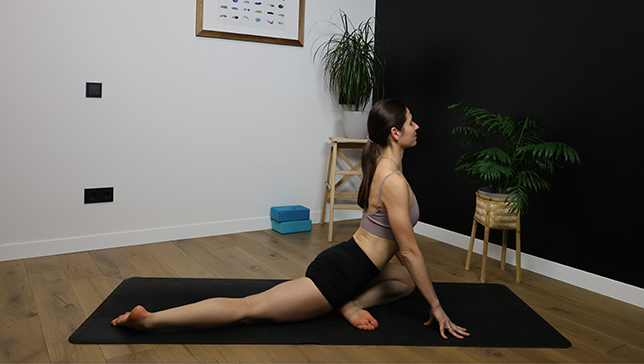
Pigeon Pose, Half Pigeon Pose, Eka Pada Kapotasana, or simply Kapotasana in Sanskrit (eka, meaning "one," pada, meaning "foot" or "leg," raja, meaning "king," kapota, meaning "pigeon," and asana, meaning "pose.") is named after a great yogic master Kapota.
Half Pigeon Pose is a challenging pose and comes under the category of Intermediate Level Poses. This asana helps practitioners to better open their hips, improve their backbend and stretch their torso preparing the whole body for more complex poses like Eka Pada Rajakapotasana A and B.
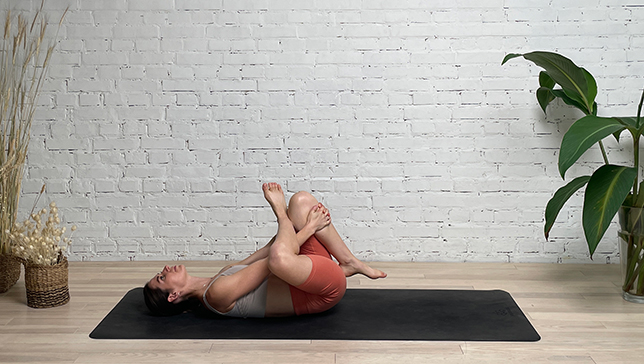
Reverse Pigeon Pose Yoga or Sucirandhrasana in Sanskrit is an elegant combination of a gentle hip-opener and an effective hamstring stretch. Also known as the Eye of the Needle Pose it is commonly used by runners during recovery, to release any strain in the hamstrings and glutes. Typically Sucirandhrasana is practiced at the end of a yoga sequence to cool down the muscles of the hips, legs, and lower back. This supine pose is a grounding practice and works on the connecting tissues when held longer, hence should be included in Yin Yoga for better flow of energy through the channels, and to activate certain meridians.
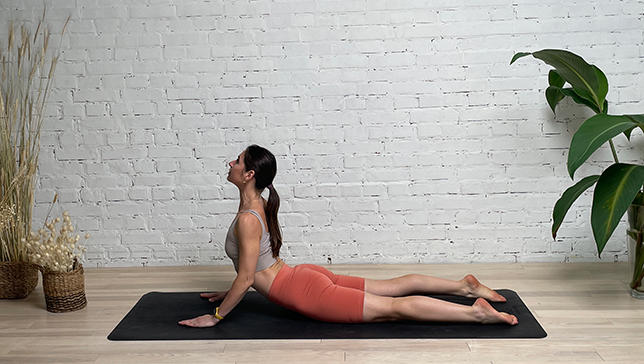
In Cobra Pose or Bhujangasana in Sanskrit, the body resembles a serpent with its hood raised. This yoga pose is considered a very powerful backward bending yoga pose in Hatha Yoga. Cobra pose comes under the category of 'lying down on the stomach' yoga poses.
As this asana is considered powerful like the Cobra snake, a lot of care should be taken while going into the pose and coming out of the pose. Any jerks of the back while going into the pose can cause discomfort to the back and can also cause injury. While releasing too, the body must drop down slowly and not with a jerk.
Cobra Pose is considered a base pose as cobra pose variations can be derived from this pose. Cobra Pose helps boost energy in the body and hence can be included in flow yoga sequences.
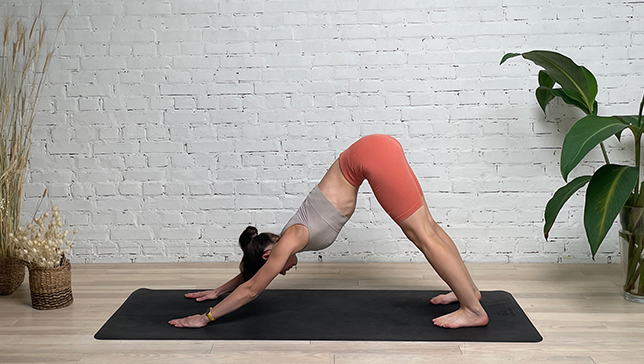
Downward Facing Dog Pose or Adho Mukha Svanasana in Sanskrit (Adho means 'downwards', Mukha 'face', and Svana means 'dog') is a foundational yoga pose that is often used as a transitional pose between other yoga asanas. Downward Facing Dog position provides a great stretch and strengthens the entire body, especially the arms, shoulders, hamstrings, calves, and spine. It can also help to calm the mind and relieve stress. Adho Mukha Svanasana is considered a base pose as Downward Facing Dog Pose Variations can be derived from this pose. This is a great pose to boost energy in the body and hence can be included in flow yoga sequences.
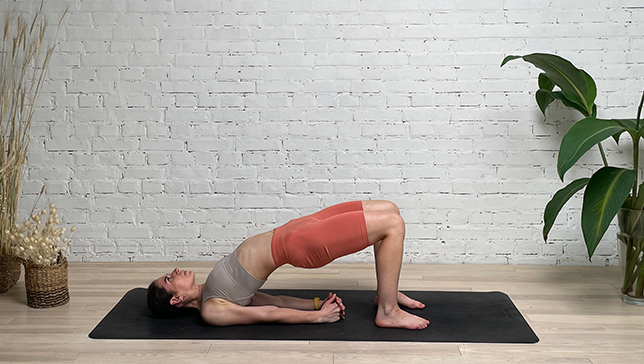
Bridge pose, also known as Setu Bandhasana or Setu Bandha Sarvangasana in Sanskrit ('setu' means 'bridge', 'bandha' means 'bind' or 'lock', 'sarvanga' means 'all limbs' or 'the whole body', and 'asana' means 'pose'), is a yoga pose that strengthens the legs, hips, and back muscles, as well as opens up the chest and shoulders. Here in Setu Bandhasana the entire spine is so beautifully curved and away from the floor/mat, which looks like a bridge. This asana is rather multifaceted. It combines the elements of a backbend, inversion, supine neck flexion, and a heart opener. Simultaneously, it brings focus to the lower body, strengthening ankles, thighs, glutes, and hips. Additionally, it stretches and tones the abdominal muscles, which in turn results in a more stable core and improved digestion. Considering the plethora of benefits it provides, it would be a wise choice to include it in your daily practice. Setu Bandha Sarvangasana is a beginner-level backbending yoga pose. It is considered a base pose as bridge pose variations can be derived from this pose. Bridge Pose helps boost energy in the body and hence can be included in different yoga sequences.
Pilates vs yoga for men
A very common question is posed. What is the difference between yoga practice and pilates? Well, yoga focuses a lot on balance, flexibility, and stability whereas pilates is strength and stability. Both forms of practice are low-impact, low-intensity training. If men are trying to pick between one or the other, then think about the additional benefits yoga brings – breathwork and meditation techniques.
Frequently Asked Questions
Yes, yoga is for both men and women. More and more men are starting to include it in their workout routines at least once a day if not more. It is a great way to relieve stress from previous workouts, helps with breathing techniques as well as meditation.
Yes, a lot of men who suffer from injuries or those who have had prostate cancer surgery, turn to yoga for rehabilitation. Yoga is low-impact on muscles and tendons that are overly active during a strenuous workout, activity, or surgery. It is especially great for beginners who have trouble with keeping balance.
Yoga mostly strengthens muscles rather than builds, but there is always room to blend a few activities that will help increase muscle build. For example, when going from a downward dog to a cobra, some men like to do a few push-ups.
They are different and they are both good. The gym will concentrate on core muscle areas and the machines there are generally high-intensity. Yoga is the opposite. It can strengthen and increase your heart rate, but it will never get to the same bpm or calorie burn that a workout in the gym does – unless of course, you tailor the workout to be intense. And even though there are some gym exercises that can be done remotely, there is nothing better than grabbing your yoga mat and doing a practice at home.
It is definitely better than no exercise! It depends on your goals. Do you want to be flexible and slightly toned? Then yoga is enough. If you are looking to build on your muscles and burn calories, then you need to include some more activities.
Yes, even just 15 minutes will help you relax, release tension, and get a night of better sleep. After a week of doing 15 minutes of yoga, you will see the motivation for longer practices start.
Absolutely. Many people do it multiple times a day for their mind and health! A great way to start is in the morning. But if you are not a morning person – evening yoga is just as good.
Yoga has been known to reduce fat loss, increase muscle tone, build-up on flexibility, and create a lean and beautiful body.



